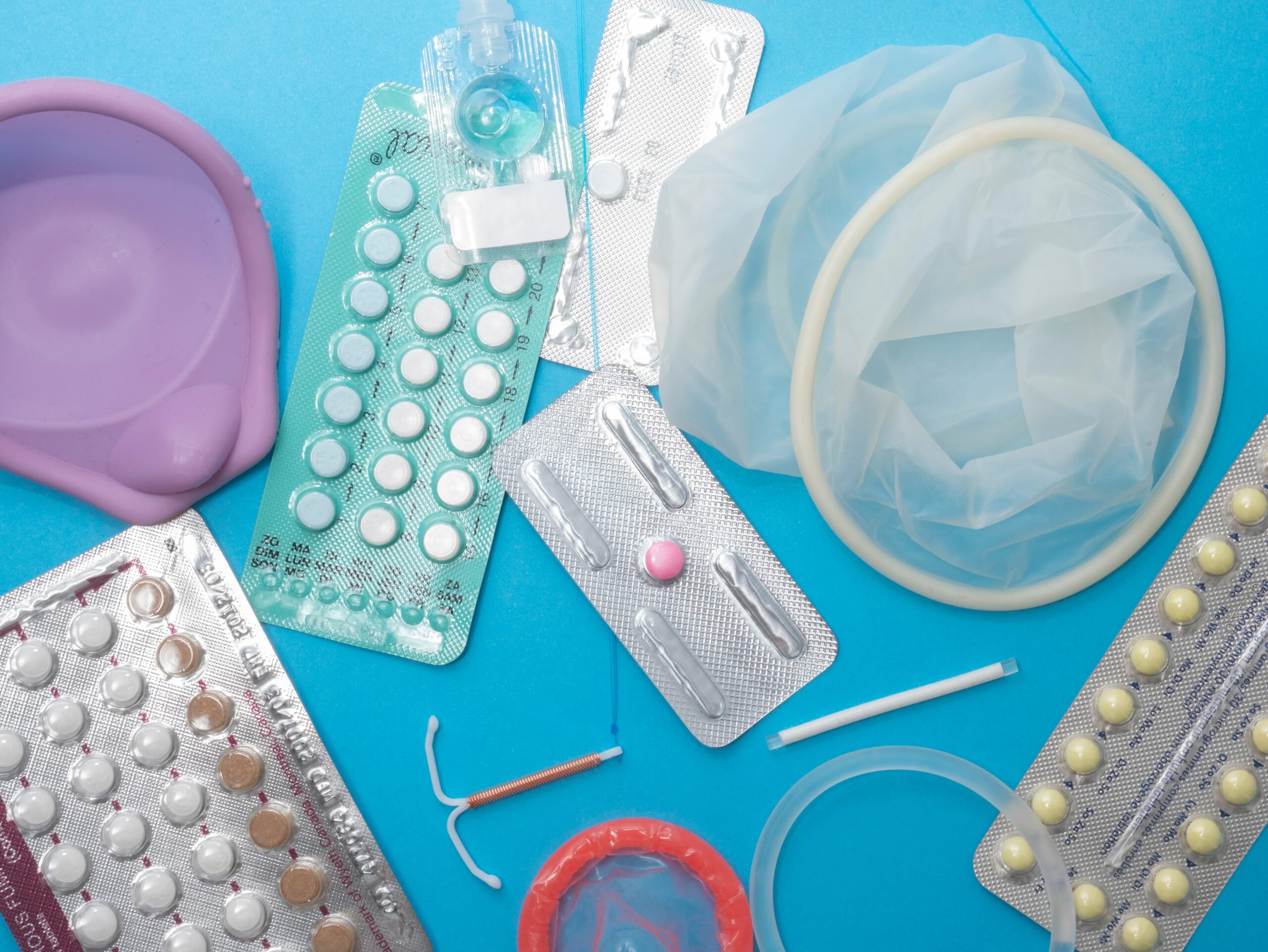We recommend waiting to have sex until after you’ve checked in with us at your postpartum visit. You also need to feel ready! This usually means abstaining from sex for a minimum of 6 weeks after delivery. However, any time is a good time to think about your pregnancy prevention plan, since some methods can be started while recovering in the hospital after delivery.
Long-Acting Reversible Contraceptives
These methods are set-it and forget-it birth control. Once they are in place, they work until they are removed in the office. Because intrauterine devices (IUDs) and the arm implant are so easy, they are the most effective methods of birth control, just as good as having a tubal ligation! Some people choose to have these placed while they are in the hospital, soon after giving birth, and others wait until their postpartum visit. Talk to your provider about which strategy is right for you. All of these methods have been well-studied and are known to be safe during breast-feeding.
Progestin-only Pills
These are recommended in the first few weeks after birth over typical birth control pills to reduce the risk of blood clots. They are also a good option for people who cannot safely take estrogen. Many people who breastfeed also choose these pills to start because there is controversy over using typical, estrogen + progestin (‘combined’) pills during breastfeeding (see below). It is important to take these pills at the exact same time every day. The most common brands have no sugar pills, so every pill is important.
Birth Control Shot (Depo Provera)
This is a shot given every 3 months for pregnancy prevention. You can have the first shot before you leave the hospital, but will need to schedule future shots in the office. It is controversial whether it can decrease milk supply, but this is less of a worry if your milk is already coming in when you get it. There are no research studies about its effect in the first few days of breastfeeding.
Pills, Patch, Ring
These methods contain both estrogen and progestin, known as ‘combined hormonal methods.’ Most people should avoid them until at least 6 weeks after birth to reduce the risk of blood clots. They are convenient and easy to start and stop. The patch is changed weekly and the ring monthly, which may be easier to remember. Pills must be taken daily, but they still work well even with an occasional missed pill.
It is controversial whether combined hormonal methods affect breastmilk supply. Some doctors recommend waiting to start these until 6 months after birth, or even until weaning, especially if you have difficulty keeping up a milk supply. This is based on clinical experience and limited studies, many of which were done decades ago. Other doctors are less worried about milk supply problems. They point to some small, but well-done recent studies that show no difference in milk supply with modern pills. If you’d prefer a combined pill, patch, or ring, while breastfeeding, talk over the pros and cons with your provider to make the decision that is right for you.
Barrier Methods
Condoms are easily available but you need to use one every time you have intercourse. If you don’t have one, forget to use one, or it breaks, pregnancy can happen. For couples that rely on condoms, consider having emergency contraception (EC) on hand. This is a pill you take once as soon as you realize there has been an ‘oops.’ We can give you a prescription for EC to fill and keep the pill in your medicine cabinet, just in case.
Diaphragms are not recommended until 6 weeks after delivery. The most commonly used diaphragm can be prescribed without a pelvic exam. It must be used with spermicide every time you have intercourse and left in place for at least 6 hours afterwards.
Breastfeeding
Breastfeeding can be an effective method to prevent pregnancy soon after birth. Your baby stimulates the breast each time they nurse, sending signals to your brain to prevent pregnancy. You can rely on breastfeeding to prevent pregnancy only if ALL 3 things are true:
- Your baby is less than 6 months old
- Your baby eats mostly breastmilk (more than 80%), directly from the breast
- You haven’t had a period yet
Meeting all 3 requirements is difficult for many people. In particular, pumping milk does not work as well as direct breastfeeding to prevent pregnancy. If you pump several times a day, such as at work or school, you should use a different method of birth control.
Abstinence
Some people plan not to have sex after the baby is born. If your plans change, and you need contraception later, please call us!
Sterilization
If your family is complete, you may choose permanent sterilization. For women, this can occur during a cesarean section or as a separate surgery following vaginal delivery. The separate surgery can occur before you leave the hospital from birth, or may be scheduled several weeks later. Obesity or prior abdominal surgeries are common reasons we may recommend waiting to do the surgery later. “Tubal ligation” is a procedure that cuts out a small portion of the Fallopian tube and ties the cut ends. “Salpingectomy” removes the entire Fallopian tube. Both are permanent and very effective.
Men can have a “vasectomy” procedure to cut the vas deferens and prevent sperm from exiting the body. This is typically done as an office procedure, with less surgical risk than sterilization surgery for women. It takes at least 3 months and a final check of sperm count before you can rely on the vasectomy to prevent pregnancy. Until then, a backup birth control method should be used.
